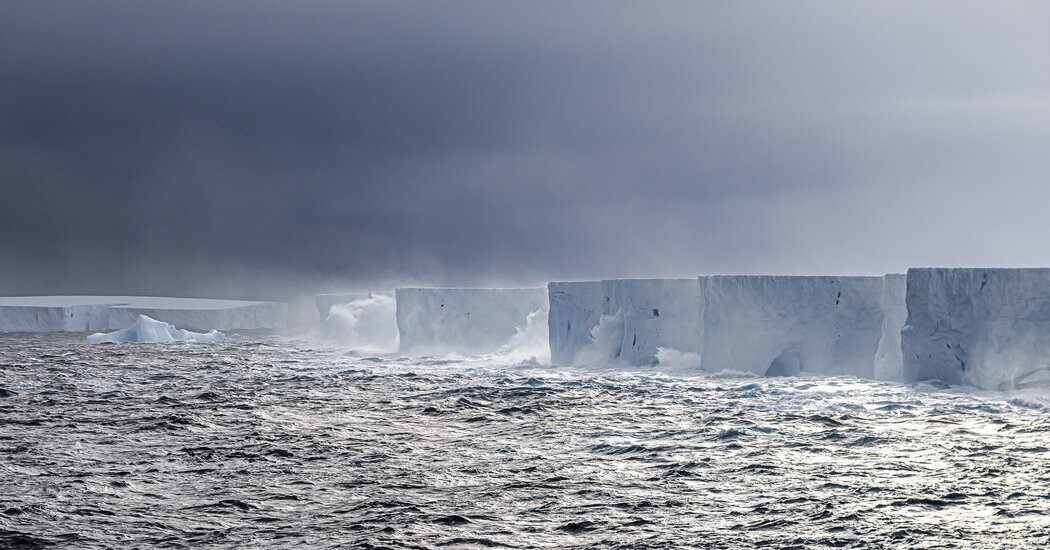Round and round a 1,600-square-mile iceberg goes, stuck in a vortex over an underwater mountain. When it will stop, nobody knows.
For more than 30 years, the world’s largest iceberg was stuck in the Antarctic. Five times the size of New York City’s land area and more than 1,000 feet deep, the mammoth piece of ice finally became loose in 2020 and began a slow drift toward the Southern Ocean.
Now, A23a, as it’s known, is spinning in place.
After leaving Antarctic waters, the iceberg got stuck in a vortex over a seamount, or an underwater mountain. Imagine a 1,600-square-mile piece of ice as deep as the Empire State Building spinning slowly but steadily enough to fully rotate it on its head over the course of about 24 days.
The iceberg is spinning near the South Orkney Islands, about 375 miles northeast of the Antarctic Peninsula, “maintaining a chill 15 degree rotation per day,” the British Antarctic Survey, the United Kingdom’s polar research institute, said on social media.
“It’s basically just sitting there, spinning around and it will very slowly melt as long as it stays there,” said Alex Brearley, a physical oceanographer and head of the Open Oceans research group at the British Antarctic Survey. “What we don’t know is how quickly it will actually come out of this.”
A23a has been embroiled in drama since the start, a trait it picked up from its parent-berg.
A23, which was even bigger than A23a, was one of three icebergs that broke off, or calved, from the Filchner Ice Shelf in 1986. At the time of the calving, A23 was home to a Soviet Union research center and researchers eventually had to abandon the base. A23a broke off later that year and hit bottom in the Weddell Sea, where it would remain for 34 more years.
